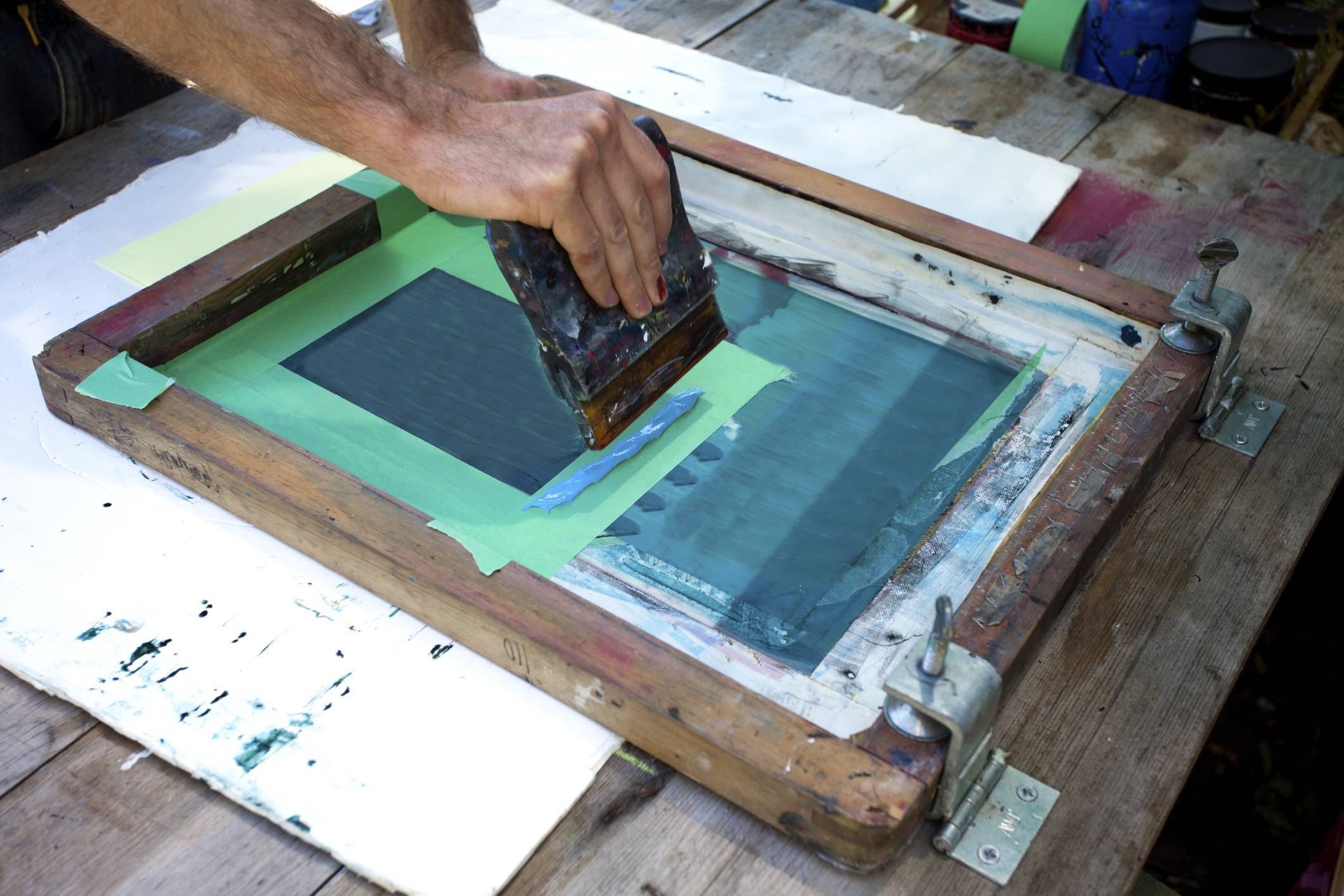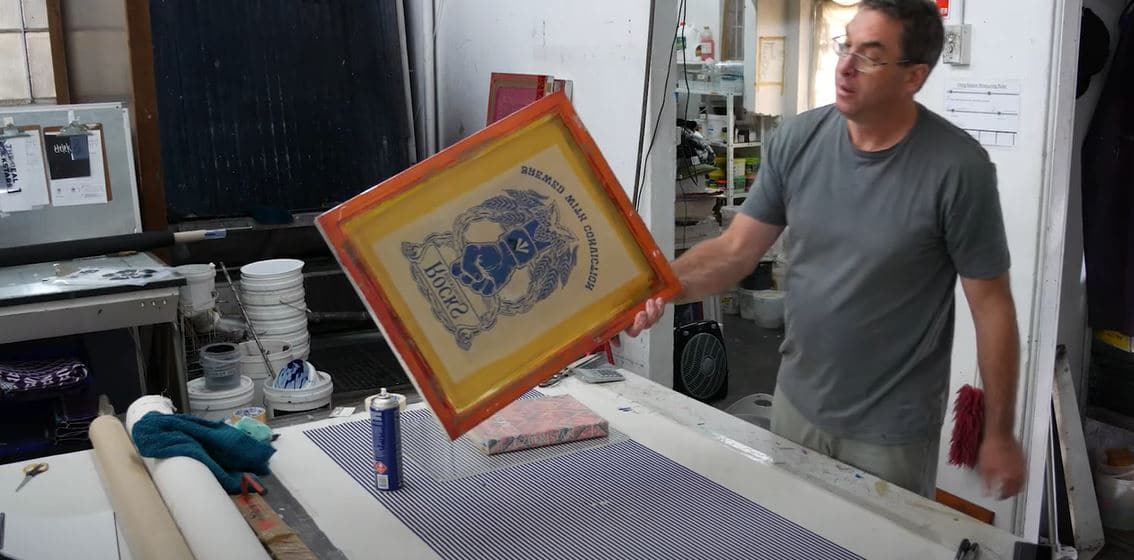ChatGPT said: 10:9 Design near me: how to locate the best screen printing services locally
The Crucial Guide to Recognizing Screen Printing and Its Versatile Utilizes
Screen printing has a rich background that dates back to old times, developing right into an advanced technique utilized across different industries today. This overview explores the ins and outs of the screen printing process, describing its applications in home, advertising, and fashion décor - 10:9 Design contact. Comprehending these principles can open up innovative possibility for both commercial and artistic projects. The complying with areas will certainly disclose important ideas and strategies to enhance one's screen printing ventures
The Background of Screen Printing
Screen printing has roots that trace back centuries, its evolution reflects the artistic and technological developments of different cultures. Coming from ancient China, the method was originally made use of for enhancing textiles and later spread to Japan, where it became indispensable to Ukiyo-e woodblock printing. The technique changed to Europe in the 18th century, where it got appeal among artisans and industrial printers. The invention of photo solution in the 20th century revolutionized screen printing, permitting even more intricate styles and higher performance. Artists like Andy Warhol even more drove its appeal, using the tool to produce legendary works that combined commercialism and great art. By the late 20th century, screen printing had developed itself as a functional method, employed in vogue, advertising and marketing, and art. Today, it continues to evolve, incorporating digital innovation and increasing its applications across various sectors.
The Screen Printing Process Explained
Screen printing changes creative visions into concrete designs via a series of specific steps. Initially, a picture is created and after that transferred onto a screen, commonly made from fine mesh material extended over a framework. A light-sensitive emulsion is related to the screen, which is exposed to light, solidifying in areas not covered by the picture. After rinsing the unhardened emulsion, a pattern is formed.
Next, the screen is placed over the substratum, whether it be material, paper, or another material. Ink is after that pushed with the open locations of the stencil utilizing a squeegee, transferring the design onto the substrate listed below. This procedure can be duplicated for multiple colors, calling for different screens for every color. The printed item is treated utilizing warmth to assure the ink sticks properly, resulting in a resilient, vivid layout all set for use.
Sorts Of Screen Printing Techniques

Additionally, specialty techniques, such as discharge screen printing, remove dye from the material to produce softer prints, while foil screen printing applies metallic foil to achieve a shiny finish (10:9 Design Company). Each technique offers distinct attributes, catering to numerous imaginative requirements and production scales, ultimately increasing the opportunities within the screen printing domain name
Applications of Screen Printing in Different Industries

In addition, the signage and advertising and marketing industries make use click over here of screen printing for producing appealing displays and banners. This technique allows for strong shades and elaborate layouts that capture interest. In electronic devices, screen printing is employed for using conductive inks to motherboard, vital for part connections. Additionally, the home design sector welcomes screen printing to generate unique styles on fabrics and wall art. On the whole, screen printing works as an important device across diverse areas, improving products with customized and visually attractive graphics.
Tips for Effective Screen Printing Projects
While taking on a screen printing job, cautious focus to information can significantly boost the last outcome. Picking top notch materials is necessary; this includes the screen, inks, and substratums. Making use of appropriate mesh counts can influence ink deposition and information resolution. Prep work is equally essential; detailed cleaning of screens and correct direct exposure times ensure crisp prints.
Next off, accurate registration is critical for multi-color prints. Utilizing placement devices can assist achieve exact layering. Furthermore, screening prints on scrap materials prior to production helps determine potential concerns without losing sources.

Frequently Asked Inquiries
What Products Are Finest for Screen Printing on Material?
Cotton and polyester blends are optimal for screen printing on fabric because of their longevity and ink absorption. In addition, specialty fabrics like silk or canvas can create special textures and finishes, improving the general design high quality.
Just how Do I Tidy and Maintain Screen Printing Equipment?
To cleanse and maintain screen printing equipment, one ought to regularly wash screens with ideal solvents, inspect mops for wear, lube relocating parts, and shop all things in a completely dry, dust-free setting to prolong their life-span.
What Are the Ecological Effects of Screen Printing?
Screen printing can have substantial environmental effects, consisting of chemical waste from inks and solvents, water usage during Click This Link cleaning procedures, and power consumption. Lasting practices and eco-friendly materials are essential for minimizing these unfavorable impacts.
Can Screen Printing Be Done in your home Efficiently?
Screen printing can be efficiently done at home with the right products and methods. Hobbyists can produce quality prints, though success relies on their ability degree, devices, and understanding of the process included.
What Are the Expenses Connected With Starting a Screen Printing Service?

Beginning a screen printing business includes costs for devices, products, and work area. Preliminary costs normally range from a few hundred to numerous thousand bucks, relying on the scale, high quality of equipment, and desired manufacturing capability.
Screen printing has an abundant background that dates back to old times, developing right into an innovative strategy utilized throughout various sectors today. An additional technique, rotary screen printing, utilizes round screens, assisting in continuous printing on textile rolls, thus improving efficiency for large-scale manufacturings. Furthermore, specialized strategies, such as discharge screen printing, eliminate color from the textile to create softer prints, while foil screen printing applies metal aluminum foil to attain a shiny coating. In the style market, screen printing is widely made use of to create dynamic designs on garments, making it possible for brands to display their one-of-a-kind designs. Cotton and polyester blends are suitable for screen printing on material due to their toughness and ink absorption.